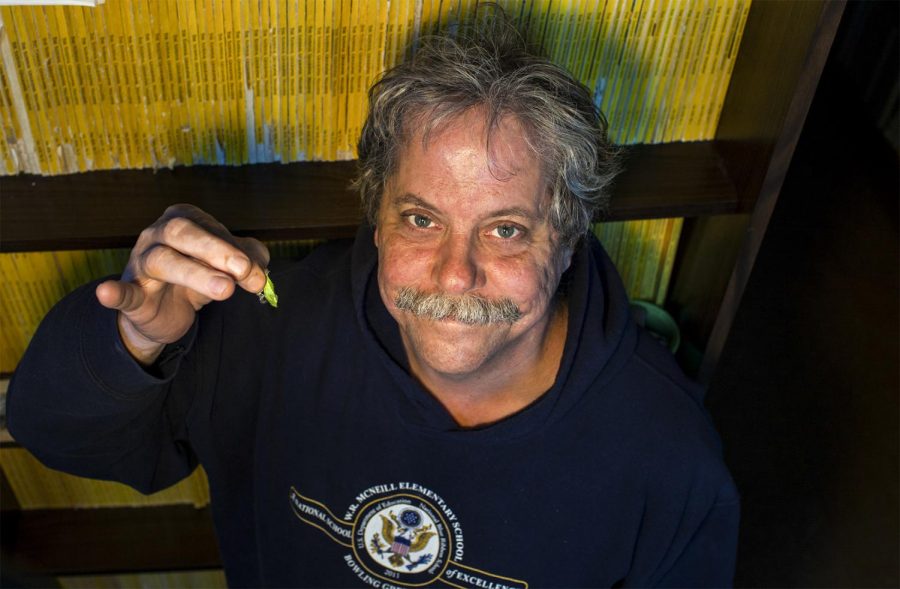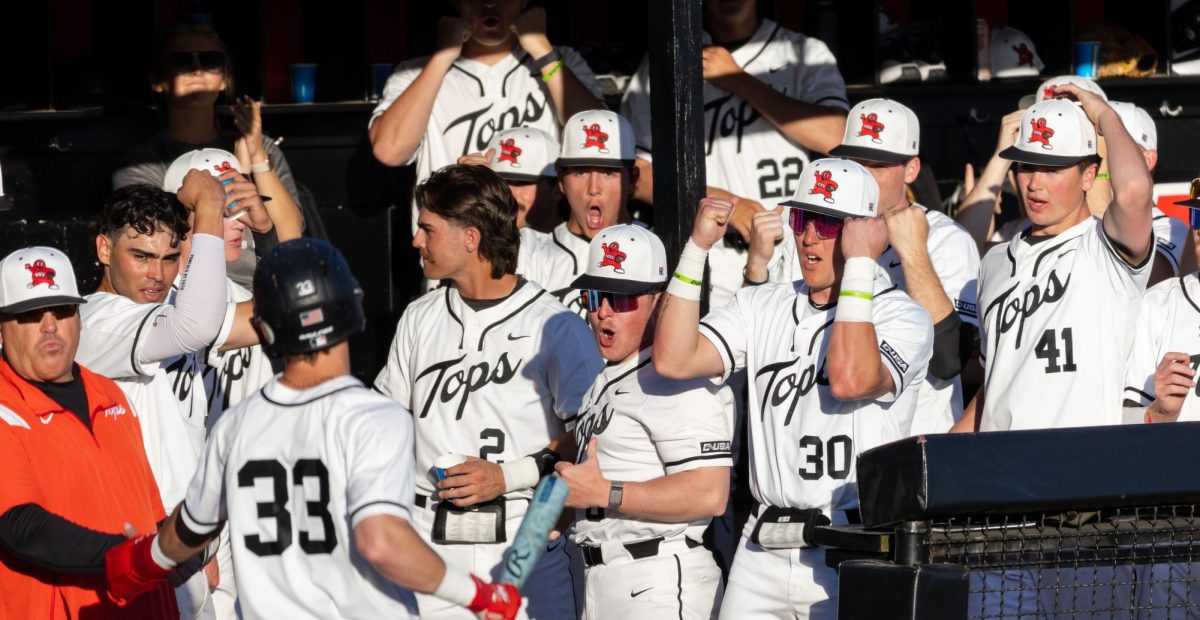Insect hobbies engage student, professor
October 27, 2015
Planting fennel plants to attract butterflies is how Chris Groves, distinguished professor of hydrogeology, started his caterpillar farm.
“I was growing a fennel plant and noticed that caterpillars started to show up,” he said. “The next year that I grew the plant, the same caterpillars showed up again.”
Since graduate school, Groves has enjoyed the pastime of raising caterpillars.
“It’s a lot of fun because when the butterflies come out of the cocoons, before they realize they can fly, they walk all over you,” said Groves.
Groves also enjoys being able to share his hobby with his daughters, who are 9 and 12.
“I think they will continue this in their future,” said Groves. “It’s something they really like. It’s joyous for all of us.”
Similarly to Groves, Ryan Dickmann, a senior from Covington, enjoys participating in an unusual kind of hobby: insect curating.
Dickmann’s hobby began as an assignment for an insect biodiversity class. After two years, he still practices curating insects.
“As I found more and more interesting species, I gained a tremendous respect for the diversity of this group of animals and wanted to learn more,” he said.
To curate an insect, Dickmann must first kill it, then place it in a jar of ethyl acetate fumes or ethanol, which preserves flexibility in the insect’s joints.
“This hobby involves a lot of observation and noticing small details,” said Dickmann.
He then uses a pin to pierce the insect’s thorax. The pin holds the specimen in place while allowing the curator to move it around and change its position
“The process of pinning is simple, but it takes some practice,” said Dickmann.
Smaller insects are then glued to triangular pieces of paper on pins, and the pins are bent so the glued insect will stay in place.
Once the gluing and pinning is completed, the insect’s legs are positioned in a way that doesn’t block any distinct features, and the wings are spread.
“After a couple days, the specimen will harden and become brittle, but it will be preserved,” said Dickmann.
More than an enjoyable pastime, this hobby has educated Dickmann about different insect species.
“I’m very interested in insects and beetles in particular,” he said. “It is a cheap hobby that has taught me to notice the small critters around me.”
In the future, Dickmann hopes to continue his hobby and to pursue insect photography once he obtains a camera and macro lens.
“This hobby isn’t for everyone, but I think that people should be more open to insects in general,” said Dickmann. “They are very often beautiful and have a suite of interesting and impressive abilities that have allowed them to become one of the most diverse and successful groups of animals on the planet.”

















